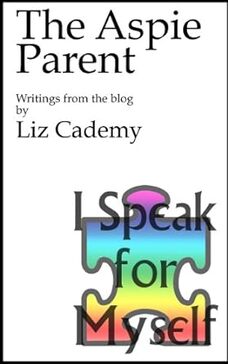What is the most concerning or destructive thing that is going on right now in your child’s world?
When a child with autism, becomes older and enters into the public school system, parent’s concerns may change and/or increase. Or, focus in areas which involve, new laws, new professionals, new priorities, and new services.
The United States Department of Education Individuals with Disabilities Education Act (IDEA), is a law ensuring services to children with disabilities. This law includes ‘autism spectrum disorder’ (ASD), in its list of disabilities which benefit from the protection of the IDEA law. However, just having autism is not enough to qualify for state public school special education services nor for an Individualized Education Plan (IEP).
The six principles of and IEP –
1. Free & Appropriate Public Education (FAPE) for each child as ‘disability’ approved.
2. An appropriate evaluation, before determined eligible to receive an Individualized Education Program (IEP).
3. An Individualized Education Program (IEP) is a written statement of a child’s need for disability accommodations and modifications for education.
4. A Least Restrictive Environment (LRE) setting is where this IEP will provide for the child.
5. Parents and students will have appropriate notification, plus the opportunity to provide advice and consent, regarding the child’s IEP.
6. A copy of IEP Procedural Safeguards will be presented and received, yearly to parents and student.
The Individuals with Disabilities Education Act (IDEA), along with Section 504 of the Civil Rights Rehabilitation Act, and the Americans with Disabilities Act (ADA), provide for exceptional needs and/or services.
Hinds (2014) has an intense focus to fix her son Ryan’s autism. She shares that sometimes it made me less than sensitive to any needs the teachers might have that were not centered on my son. Past experience had taught me that great credentials didn’t guarantee a person would know how to work with my son. I felt cornered.
< My Thoughts > “…I felt cornered.”
I just wanted to say this about that. If everyone on the team, ‘except you’ as the parent, feels comfortable with your child’s IEP goals and interests, please don’t force yourself to get comfortable with ‘their’ plan. Consider several things –
- One – Is what is being agreed to on paper (IEP), actually what is/will be happening consistently in the classroom?
- Two – Does the team ‘only come close’ to providing the services or curriculum that you want for your child?
- Three – Do your prioritized wants and needs match theirs?
If they don’t have the same picture of your child that you do, then SPEAK UP! If you feel marginalized, not being heard; or seem to be invisible; trust your ‘parent radar’.
No single factor should dominate the student’s IEP placement decision; rather, all factors should receive equal consideration. The IEP team must draw upon information from a variety of sources (e.g., aptitude and achievement tests, teacher recommendations, physical conditions, social or cultural background needs; plus, accommodating for adaptive behavior).
Burke & Goldman (2015) believe that in the United States, embedded within the Individuals with Disabilities Education Act (IDEA), there are procedural safeguards to protect the rights of children with disabilities to access free and appropriate education (FAPE). Through FAPE, parents and school districts can use these safeguards to both mediate and initiate ‘Due Process’. If the parents and the school cannot resolve their disagreement then parents may use ‘Due Process’ under this law.
They say that, for instance, when parents become frustrated with the school district’s choice of settings and type of instruction for their child, they may choose to disagree with the school by using ‘due process’. Many parents resort to this procedure when learning that the school has placed their child in a segregated classroom setting (special education), as opposed to an inclusive setting (general education).
< My Thoughts > “…choice of settings and type of instruction…”
Most of the issues causing frustration for parents can be about how Special Education Services are delivered. Many parents believe their child can be very successful with the appropriate support within a ‘fully’ integrated classroom setting; some call this the ‘Inclusion’ Model. While others feel that their child should receive services in a ‘sheltered’ Special Education setting (Resource Room), in public school. There are many ways to approach educating a child with special needs; some school districts educate these students on completely separate campuses.
Plus, the frustration parents may face, Burke & Goldman (2015) believe that the process can become quite costly. They offer that in some states, but not all, there are pro-bono attorneys who will assist the families engage in ‘due process’. If they cannot find support or pro-bono services from attorneys who will help them, every state has a Protection and Advocacy (P & A) agency to assist at a reduced cost.
< My Thoughts > “… attorneys who will assist the families…”
On today’s local news, the station was awaiting a response from the local public school district. The concern was that 20 local families had engaged an attorney to investigate claims that the special needs children of these families were not being met. The attorney explained to the news reporter that an INDIVIDUALIZED EDUCATION PLAN (IEP) is a ‘legal document’, which must be implemented in a timely and appropriate manner. The parents have a legal right to ‘due process’ action.
< My Thoughts > “…if eligible, an IEP, Individual Education Plan is prepared.”
Retrieved from: https://www.understood.org/en/school-learning/special-services/ieps/understanding-individualized-education-programs
An IEP is a legally and binding contract meant to address each child’s unique learning issues and specific educational goals. The school must provide everything it promises in the IEP, or the parents have a legal recourse, called Due Process.
The IEP provides educational support and services through IEP Modifications & Accommodations which will help your child progress through the educational system. This provision continues for each student who qualifies until s/he reaches their 22nd birthday. IEP Modifications are often paired with IEP Accommodations in order to make learning more accessible, allowing that student to more fully participate in learning and testing of what educational goals have been met.
Note: Read more about an IEP, and Due Process in –
UNIT 6 – CHAPTER 3 – Laws ~ Federal, State, & Local UNIT 6 – CHAPTER 3 – INTRODUCTION
a. Individualized Education Plan (IEP)
b. Autism Education & Anti-Bullying Policies
I know he can do this and he will succeed, but sometimes I can’t help but wish his road was a little easier for him.
60% Wait, What? –
…I dutifully go to the school office and sign in and get a badge so I am an “official” visitor at the school.
…while I was signing in, my son walked into the office.
He was supposed to be in class, what was he doing in the office?
One of the assistants asked him why he was there. He explained that he had been misbehaving in class and the teacher had sent him to the office.
Wait, What? There is specific language in the IEP* that he is not to be sent out of the classroom for his behavior.
41% The ‘specials’ teacher had sent him out of the classroom. Why isn’t the ‘specials’ teacher following the IEP?
A couple of days later I got notice that an IEP meeting had been set, including the ‘specials’ teacher.
42% Wait, What? Why were we having an IEP meeting?
The meeting came and I learned that the ‘specials’ teacher had not been given notice of the relevant accommodations in the IEP related to my son.
…None of the ‘specials’ teachers had been given that information. (A ‘specials’ teacher is a licensed teacher who teaches Non-Core Curriculum classes. Often these classes are Art, Music, Physical Education, and/or Computer. This is done to give the teachers of Core Subjects a contracted hour of Lesson Preparation Time.)
Wait, What? How can they do their jobs if they don’t have the information they need?
43% The meeting went well as far as my son is concerned. The ‘specials’ teacher now has the knowledge and tools needed to manage my son’s behavior in the classroom.
This meeting took place on the second to last day of Autism Awareness Month.
< My Thoughts > “None of the ‘specials’ teachers had been given that information.” “Autism Awareness Month”
My motto (one of them) is never to ‘assume’ anything! As parents and as teachers, immersed in the world of autism, we sometimes tend to ‘assume’ that everyone out there is operating from the same knowledge base that we are. Not so! And, many people prefer not to think about anything that deviates from the ‘norm’, especially ‘autism’.
References:
Barnes, E. W. (2014). Building in Circles: The Best of Autism Mom; eBook Edition.
Burke, M., & Goldman, S. (2015). Identifying the Associated Factors of Mediation & Due Process in Families of Students with Autism Spectrum Disorder; Journal of Autism & Developmental Disorders; V45; 1345-1353.
Cademy, L. (2013). The Aspie Parent, the First Two Years A Collection of Posts from the Aspie Parent Blog; eBook Edition.
Hinds, M. (2014). I Know You’re In There: Winning Our War Against Autism; eBook Edition.
Luker, S. (2024); Know Autism, Know Your Child with < My Thoughts > by Sara Luker; Retrieved online from – www.sarasautismsite.com
Senator, S. (2016). Autism Adulthood: Strategies & Insights for a Fulfilling Life; Skyhorse Publishing.
Note: DISCLAIMER – Autism ‘intervention’, as with the phrase ‘Early Detection / Early Intervention’, may simply mean to attempt an ‘action’, or attempt to ‘change a course’ or ‘trajectory’ of the person’s autism. Any expectation for a successful ‘change’ must have the cooperation of the participant, the parent, and/or the assigned therapist. Words such as, ‘intervention’, ‘treatment’, ‘therapy’, ‘service’, or ‘program’ imply ‘cure’, or ‘long-term’ positive effect. That is NOT my intention here, and all information is presented without intent or suggestion of status or effectiveness.
End of DAY SEVENTEEN. Note: Excerpts from the books – (13% indicates location in the Kindle version of the eBook, instead of page numbers).
Sharing of my website and BLOG Comments welcomed. Thank-you to those of you who have sent comments... much appreciated!
Regards,
Sara Luker



 RSS Feed
RSS Feed